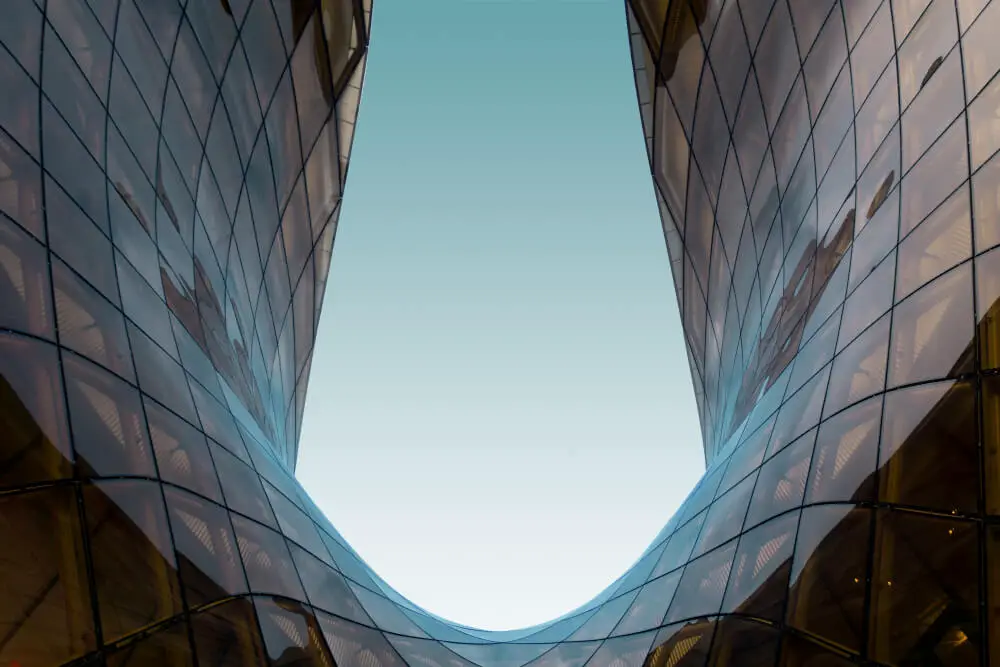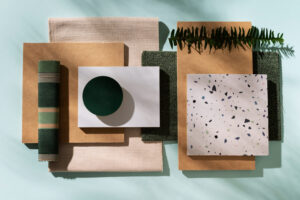In interior design, few upgrades deliver more impact for less effort than lighting. From small apartments to luxury estates, homeowners and designers alike are investing heavily in lighting upgrades, transforming dull, underlit spaces into sophisticated sanctuaries. Among the latest lighting trends, one material is taking center stage for its ability to reshape both light and space: curved glass.
Curved design in contemporary and modern interiors is more than just a stylistic flourish. This is why curved glass is becoming an essential tool in modern lighting design. It offers a unique way to soften illumination, sculpt ambiance, and introduce a touch of elegance without overwhelming a room. From artisanal pendant lights to dramatic architectural skylights, curved glass is reframing how we think about light—and how we live with it.
The Light Effect: How Curved Glass Shapes Illumination
Light behaves differently when it passes through curved glass. Unlike flat panes, which direct light in straight paths, curves diffuse and bend light, creating a more organic and ambient glow. This subtle refraction softens harsh edges, disperses brightness more evenly, and adds a sense of movement to static spaces.
Curved glass is particularly effective in creating mood lighting. A smoked-glass globe or frosted curved sconce can reduce glare and eliminate shadows, casting a warm, atmospheric tone. These qualities make curved glass ideal for living rooms, bedrooms, and wellness spaces—anywhere comfort and visual softness are desired.
Even natural light takes on a new dimension when filtered through a curve. Arched skylights or bubble-shaped windows introduce a dynamic interplay of light and shadow that evolves throughout the day, giving a space rhythm and life.
Functional Art: Curved Glass in Modern Lighting Fixtures
Curved glass is no longer confined to structural applications; it has fully entered the realm of decorative lighting. Designers are embracing curves in all forms—domes, spheres, arcs, and ripples—to craft lighting fixtures that function as sculptural art.
Popular applications include:
- Pendant lights: Often featuring hand-blown curved glass globes, suspended over kitchen islands or dining tables.
- Wall sconces: Crescent-shaped glass wraps around LED tubes, diffusing light with elegance.
- Chandeliers: Multi-tiered curved glass panels reflect and bend light for a chandelier effect that’s both modern and timeless.
- Table and floor lamps: Combining curved glass shades with brass, marble, or wood bases for tactile contrast.
Designers are also experimenting with colored and textured curved glass—amber, smoky grey, ribbed, and even iridescent finishes—to add visual intrigue and personalization.
Skylights and Architectural Glass: Framing Daylight with Elegance
Beyond fixtures, curved glass is making its mark on architectural lighting. In homes that value natural light as a design element, curved skylights and roof panels are increasingly in demand. These installations provide expansive views of the sky while filtering sunlight in a way that’s both functional and poetic.

Unlike traditional rectangular skylights, curved versions don’t just flood a room with light—they shape it. The gentle arch of a glass ceiling or the curve of a high transom window draws the eye upward and creates a sense of airiness and expansion. It’s especially impactful in stairwells, bathrooms, hallways, and atriums, where natural light becomes part of the architecture.
Clerestory windows and curved-glass partitions also play a role, adding ambient daylight to interior rooms without compromising privacy. The result is a home that feels brighter, lighter, and more fluid—qualities that are increasingly associated with contemporary luxury.
Crafted to Glow: How Curved Glass Is Made by Artisans
While factory-made curved glass is available, the most striking pieces are handcrafted by skilled artisans, often in small studios where tradition meets innovation. Creating curved glass for lighting requires both technical mastery and artistic intuition. The most common technique is hot bending, where flat glass is heated in a kiln until pliable, then shaped over custom molds and annealed slowly to prevent breakage. The process demands exact temperature control, precise curvature calculations, and a deep understanding of how glass reacts under heat and stress.
Each piece must be uniform in thickness, free from bubbles or warping, and often tinted, textured, or etched according to the designer’s vision. In some cases, artisans use kiln-forming or slumping, gently coaxing the glass into flowing forms that appear organic and spontaneous, yet are meticulously controlled. This is why many high-end lighting brands collaborate with glass artists to produce limited-edition or bespoke fixtures. These handmade pieces carry an emotional weight and narrative that mass-produced designs often lack. They feel human, intentional, and alive—perfect for interiors that aim to be both luxurious and grounded.
Interior Harmony: How Curved Glass Enhances Design Flow
Curved glass doesn’t just change the light—it changes how we interact with a space. In interior design, curves are known to introduce softness, fluidity, and calm. They visually counterbalance the hard lines of walls, furniture, and architecture.
Because of its transparency, glass maintains openness while still defining areas. A curved-glass pendant doesn’t interrupt sightlines the way a solid fixture might. Instead, it draws the eye without dominating the space. This makes it ideal for open-plan homes, minimalist interiors, and rooms that rely on subtle transitions rather than hard separations.
Curved glass also adapts beautifully across styles:
- In modernist spaces, it complements clean lines with a softer edge.
- In Japandi or Scandinavian interiors, it reinforces the value of organic, light-filled minimalism.
- In Art Deco-inspired rooms, it echoes the glamour and geometry of vintage design with a contemporary twist.
In every case, the result is the same: greater visual harmony and a more inviting ambiance.
As lighting continues to evolve from a purely functional component into a cornerstone of interior design, curved glass is emerging as one of the most versatile and luxurious materials available. It diffuses light with elegance, enhances flow without clutter, and brings artisan craftsmanship into everyday living.
Whether it’s a bespoke pendant glowing above a dining table or a dramatic arched skylight illuminating a hallway, curved glass helps us see our spaces differently—literally and emotionally.
In a world chasing brightness and openness, curved glass offers a more nuanced beauty. It reminds us that light doesn’t have to be harsh to be powerful, and that design doesn’t have to shout to be seen. Sometimes, the softest curve makes the boldest statement.
For more ideas, you can find a wide range of interior design tips and guides from experts at Roomlay.






